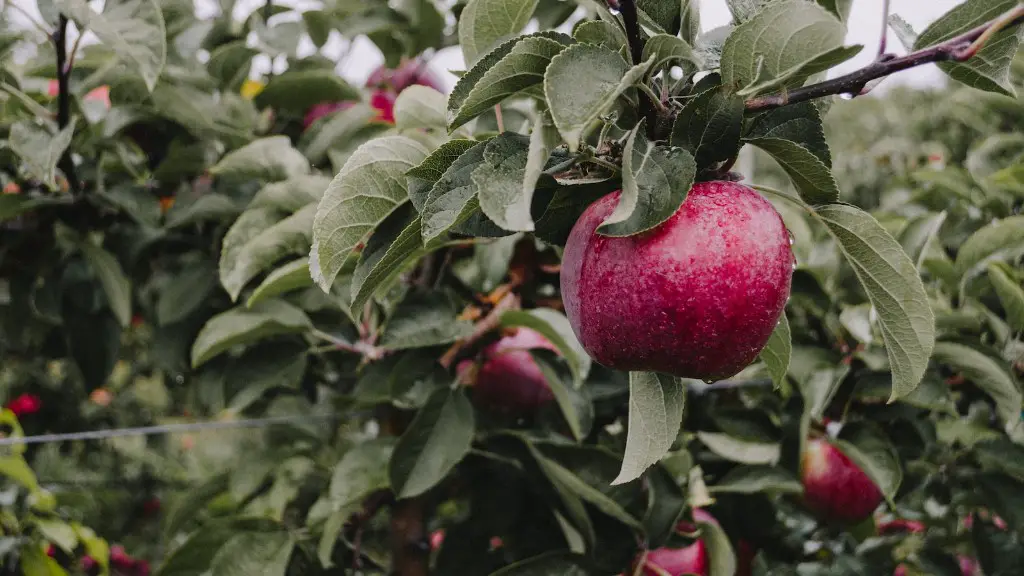Repotting a lemon tree in summer is an activity that requires specific conditions. It is important to note that repotting during the summer can be more stressful to the tree than at other times of the year. For this reason, expert knowledge is advised when considering repotting in summer. One should consider the pros and cons of repotting a lemon tree in summer, and ensure that the necessary steps are taken to minimise the effects of transplant shock.
Firstly, summer offers certain advantages for repotting a lemon tree. The soils are warmer than during other seasons, making it easier to break up and moisten soil, as well as having less damage to the roots. There is also a longer period to water and settle the root ball, which will help in the acclimatisation of the tree.
On the other hand, there are certain drawbacks associated with repotting during the summer months. Temperatures are often too high, causing an increased risk of root damage due to heat and dehydration. The leaves also suffer more stress as they are exposed to excessive sunlight. Soil temperatures may also be too high, reducing the availability of soil nutrients and slowing down the development of the roots.
In addition, the tree may suffer wilting under excessive heat, and could require extra nutrients to help it recover. Taking timely and adequate measures helps in re-establishing the tree. For example, regular watering, shading the tree and fertilising can help the tree recover.
It is also wise to wait until early autumn, when temperatures are milder and irrigation can be done easily. This reduces the risk of transplant shock, which can occur due to sudden changes in temperature. In order to further reduce stress to the lemon tree, it is important to ensure that the root system, soil and pot are suitable for transplantation.
Pruning
While considering repotting a lemon tree in summer, it is essential to prune the tree. Pruning helps to reduce the strain on the tree, as well as helping to identify any disease, insect or root damage. Pruning removes damaged and unproductive branches, making the tree stronger and more productive. Pruning also reduces the need for staking, as the tree will require less support following pruning.
Pruning can also encourage root growth, as the soil will be able to hold nutrients better, while the new growing tips will be able to absorb these nutrients more easily. Pruning should be done carefully and slowly, as too much pruning can cause shock, which can have a negative effect on the overall health of the tree.
It is important to ensure that the pruning process is not done too aggressively or too often. Light pruning is recommended during the summer months, as the tree is more susceptible to stress and shock. It is also advised to use sharp and sterilised blades when pruning.
If done correctly, pruning can help to improve the condition of the lemon tree, as the tree will be able to absorb more sunlight and nutrients, thus helping it to maintain healthy growth. However, if done poorly, pruning can do more harm than good.
Watering
When repotting a lemon tree in summer, it is important to keep in mind that the tree will need more water. The tree will require regular and sufficient watering during the summer months, as increased temperatures and wind dry the soil quickly. Watering should be done deeply and thoroughly, to ensure that all of the roots get sufficient moisture, and the soil should be checked regularly.
Mulching the soil can also help retain moisture and cool the soil during summer. Organic mulch is recommended, such as bark, sawdust, compost or grass clippings, which will helpregulate soil temperatures and provide essential nutrients for the lemon tree.
Over-watering can be a major problem during the summer months, as the tree can become waterlogged, leading to root rot and other diseases. Therefore, it is important to ensure that the soil is adequately drained, and that the tree is only watered when the soil is dry. Lack of sufficient drainage can cause excess water to remain in the soil, which can lead to root rot and other diseases.
It is also beneficial to add moisture-holding agents, such as moss and mulch, to the soil. These materials help to reduce the rate at which water evaporates from the soil, allowing the roots to remain hydrated for longer periods of time.
Fertilizing
Fertilising is another important aspect of repotting a lemon tree in summer. During this period, the tree will benefit from multiple applications of fertilizer. However, too much fertilizer can be damaging to the tree, so it is important to follow the manufacturer’s instructions carefully.
Organic fertilisers are preferred over chemical fertilisers, as they provide essential nutrients while maintaining the soil structure. These fertilisers may include compost, manure, seaweed, rock dust and other organic materials, which help to increase the nutrient content of the soil.
It is also important to use a balanced fertilizer, which should include nitrogen, phosphorus and potassium. Too much of one element may cause problems, such as nitrogen burn, which can damage the leaves of the tree. It is also advised to use a controlled release fertilizer, which will release nutrients slowly over time.
Finally, it is important to make sure that the fertilizer is applied at the right time. Applying fertilizer too early can cause shock to the tree, while fertilizing too late might result in a slow surge in the tree’s growth. A well-timed application of nutrients helps to minimise any undue stress on the tree.
Pest Control
Repotting a lemon tree in early summer also makes it vulnerable to potential pest outbreaks, as the warm temperatures are conducive for insect and disease damage. Controlling pests and diseases before they become a problem is essential for ensuring the health of the tree.
The first step in pest control is to identify the pests, as different pests require different treatment. After identification, the tree can be treated with organic or inorganic pesticides, depending on the severity of the pest problem. In the case of more serious infestations, it is advisable to contact a professional pest control service.
It is also important to inspect the tree regularly, to identify any new infestations. Regular inspections help to prevent pest outbreaks by catching them early. Pests can also be kept at bay by cleaning the leaves, which should be done regularly to prevent any diseases from spreading.
Organic methods of pest control, such as companion planting or intercropping, can also be used to protect the lemon tree from potential infestations. These methods use plants that help repel or attract certain pests, helping to reduce the amount of pesticides used.
In addition, encouraging beneficial insects, such as ladybugs, spiders and parasitic wasps, can also help to keep pests at bay. These beneficial insects will feed on the pests, thus managing their populations naturally. Providing a safe habitat for beneficial insects, such as shelter and food, can help to ensure that they will stay in the garden to help control pests.
Pruning and Training
Once the lemon tree is planted in its new pot, it is important to prune and train it correctly to ensure that it is healthy and productive. Pruning helps to remove unproductive branches, while also encouraging new growth. Pruning should be done carefully, as excessive pruning can cause shock to the tree.
Training the tree can also be beneficial, as it helps to shape the tree and encourages healthy growth. Training the tree involves bending and supporting the branches, as well as allowing the tree to find its own shape, if possible. Different training techniques, such as winding, bridging and pruning, can be used, depending on the desired shape of the tree.
It is also beneficial to use mulch and water-retaining agents when repotting a lemon tree in summer, which will help to keep the soil cool, retain moisture and protect the roots from heat. Additionally, mulches provide essential nutrients for the tree, and help to reduce the risk of pest and disease infestations.
Finally, it is important to provide support for the lemon tree during its first few growing seasons. This can be done by staking the tree, which will provide support and keep the tree stable in its new pot.




